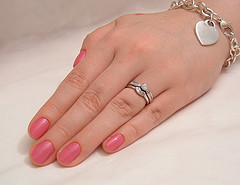Nail Problems And Solutions

1.Nail Biting Preventive:
When the urge arises to nibble on your fingernails, rub the Aloe Paste on the edge of the nails. The taste should discourage you.
Caution: A little bit of this gel goes a long way. Large internal doses of concentrated aloe can cause vomitting. A pregnant woman might be tempted to nibble despite the application of ointment, in which case, avoid this remedy, as the plant’s anthraquinone glycosides are purgative.

2.For Infected Nails:
Try a warm compress of fresh aloe-vera gel. Squeeze the gel directly on the infected finger and cover with warm, slightly damp cotton cloth.

3.Caring For Your Hangnails:
Hangnails, fleshy bits of dry skin that have split away from the edges of the fingernail, are very common in nail-biters. They can be painful and become a site for secondary infections. Children often have hangnails. This a good time to give them some direction on how to keep their skin and nails fit. Suggest that they resist the temptation to tear off a hangnail. If it is in the way, cut the flap of skin at its base with clippers or small scissors. Store a bottle or tube of hand cream at every sink and try to get the family in the habit of using it after hand washing. Hangnails can also signal dry cuticles caused by frequent hand washing, cold weather, or rough working conditions. Moisturize the nails and skin around them often. Regular moisturizing the cuticle area will help cut down on the urge to bite.

4.Protecting Nail Infections: When you have an infection around your nails, wear protective gloves to do wet work on such tasks as washing dishes, cars, laundry and gardening. Turn the gloves inside out and wash them at least once a week. When the infection is gone, toss the gloves.
Lemon Folk Remedy: In addition to relieving the pain of infection, this treatment will remove stains from your nails. A bonus is that lemon juice restores the natural pH of your skin.
Method: Take 1 or 2 lemons. Cut a small opening at the end of a lemon and push in the affected finger. Keep the infected finger in place until the lemon ceases to draw (stops stinging). If you wish, apply another lemon until the pain is relieved.

Note: If the infection or inflammation continues for a time, the nail will lose lustre and have ridges, and the developing nail will be affected. When home remedies do not work, it’s time to consult a dermatologist who specialises in nail problems.

5.Care For Brittle Nails: A homeopathic remedy for brittle nails is Thuja 6x. You should be able to obtain this treatment in stores selling medicinal herbs or from a homeopathic specialist. Thuja 6x is made from the fresh, green twigs of American arborvitae Or Eastern white cedar. These branches contain thujone – a volatile oil that is said to affect the concentration of salt, water, and electrolytes in the body – as well as other wax, resin, and gelatinuous ingredients. It encourages moisturisation and helps prevent and heal brittle or split nails. Thuja is best in a homeopathic, diluted dose because it can be toxic when taken in full strength and in excess.
Caution: Pregnant women and people with irritant, dry coughs should not take thuja.

6.Preventing Splitting Nails: Eat 6 raw almonds everyday to relieve splitting of the fingernails. Linoleic acid, an essential fatty acid (EFA), is one of the important components of almonds. Among other benefits, EFAs help lubricate the body’s cells.

7.To Destroy Nail Fungus: Nail fungus is a very common complaint of people especially women and mostly in feet. It can be easily get rid of by using / applying paste of Henna continuously for a fortnight at the time of one going to bed. It can be washed next morning but avoid putting your feet into water too much.
Henna Nail Paste:
Henna has wonderful conditioning and nail-strengthening properties. This is a fun natural nail treatment with children or on your own.
Preparation: You will require 1/2 cup boiled water, 1/2 tsp uncolored, natural henna powder. Add the henna to warm, boiled water and mix well, using a non-metal stirring spoon. Make a paste of the mixture and place it in a small jar with a screw-top lid.
Application: Using a chapstick, glob the henna paste on each of your clean, dry nails. Let the henna paste dry on your nails and cuticles for 10 minutes. You will feel a pleasant “drawing” sensation. Afterwards, rinse your fingers, towel dry, and gently buff the nails. You can use natural henna once or twice a week for nail conditioning. Remember to stir the henna mixture each time.